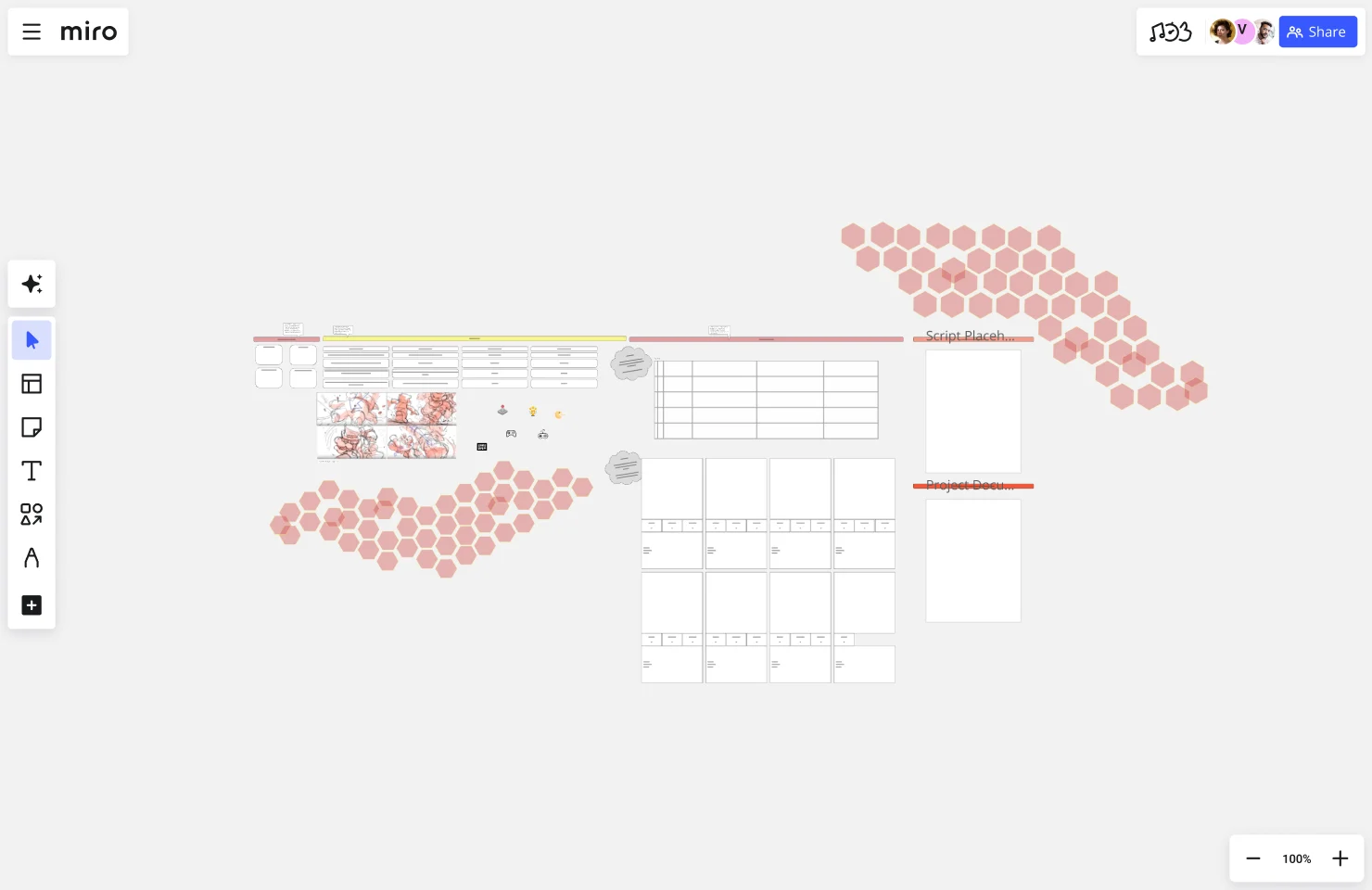Storyboard for Game Design Template
The game design storyboard template visualizes game development from concept to execution, helping manage resources and promoting a cohesive gaming experience.
About the Storyboard for Game Design Template
This template is designed to assist game designers in visualizing and planning their game from concept to execution. It includes sections for defining roles, pre-planning, storyboarding, scripting, and asset listing. By using this template, you can ensure a cohesive and well-organized game development process, helping your team stay aligned and on track.
Why Use This Template?
Organization: Helps structure the game development process by breaking it down into manageable sections.
Clarity: Ensures that all team members are on the same page regarding roles, objectives, and the game’s vision.
Visualization: Allows for clear visualization of each level or scene, aiding in better planning and execution.
Consistency: Provides a consistent framework for scripting and asset creation, ensuring all elements of the game are cohesive.
Efficiency: Streamlines the development process, making it easier to track progress and identify any gaps or missing elements.
By using this template, game designers can maintain a clear and organized approach to game development, ultimately leading to a more polished and well-thought-out final product.
This template was created by Anthony.
Get started with this template right now.
2x2 Prio Matrix Template
Works best for:
Design
Understanding the balance between importance and difficulty is crucial for effective decision-making and progress. To aid in prioritization, a simple 2x2 matrix can map these factors on the x-axis and y-axis, respectively. This framework allows you to assess the trade-offs and tensions involved. The lower left quadrant represents quick wins, while the upper left quadrant consists of luxury items that may be costly with limited returns. The upper right quadrant contains strategic items that require significant investments for substantial results. Finally, the lower right quadrant houses the most valuable items, offering high impact at a lower cost.
Proto Persona Template
Works best for:
Design
Business decisions frequently rely on the personal preferences and assumptions of internal employees. However, making decisions that prioritize the needs of the individuals being served is helpful. When personas are developed effectively, they provide guidance to you and your team, ensuring that the interests of these crucial stakeholders are considered when making significant decisions.
Look Mock Analyze Template
Works best for:
Design, Desk Research, Product Management
Doing your homework (aka, the research) is a key step in your design process, and the Look, Mock, Analyze approach helps you examine, structure, and streamline that step. With this powerful tool you’ll be able to identify your strengths and weaknesses, what you did right or wrong, and whether you spent time efficiently. Our Look, Mock, Analyze template makes it so easy for you to discover inspiration, mock up designs, and get feedback — you can start by setting up your board in less than a minute.
Co-Creation Template
Works best for:
Design
The Co-Creation Template enables the visual expression of ideas using essential elements. Analysis of these creations identifies explicit and implicit needs. For instance, a human resources team may use symbols to envision their ideal work environment. The output reflects people's desires and expectations.
Spider Chart Template
Works best for:
Design
Spider Charts (or star plots) prioritize thoughts and ideas by importance. They help visualize complex information with significant items in the center and less important items progressively farther from it. Radar spider charts help understand relationships between information for better decision-making.
Heuristic Evaluation Template
Works best for:
Design
The Heuristic Evaluation Template is a valuable tool in UX design. It relies on heuristics to identify usability issues and opportunities for improvement. Similarly, design heuristics serve as guidelines to evaluate the quality of a design solution. Following ten principles of good design can enhance the effectiveness of a product or service. Use these guidelines to evaluate your work and enhance the user experience of your design solutions.
